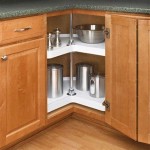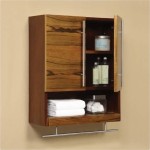How To Finish Unfinished Oak Cabinets
Unfinished oak cabinets offer a blank canvas for customization, allowing homeowners to achieve their desired aesthetic. Finishing these cabinets involves several crucial steps to ensure a professional-looking and durable result.
Preparation is Key: The first step is thorough preparation. This involves cleaning the cabinet surfaces to remove any dust, dirt, or grease. A tack cloth can effectively pick up fine dust particles. Inspect the wood for any imperfections like dents or scratches. Minor imperfections can be filled with wood filler, while deeper damage may require more extensive repairs.
Sanding for a Smooth Surface: Sanding is essential for achieving a smooth finish. Begin with a coarser grit sandpaper, such as 120-grit, to level any imperfections and open the wood pores for better stain penetration. Gradually progress to finer grits, like 150-grit and then 220-grit, for a flawlessly smooth surface. Sanding in the direction of the wood grain is crucial to prevent unsightly scratches. Between each grit, wipe down the cabinets with a tack cloth to remove sanding dust.
Selecting the Right Stain: Choosing the right stain is paramount for achieving the desired color and look. Oil-based stains penetrate deeply into the wood, offering rich color and enhancing the natural grain. Water-based stains are easier to clean up and have lower VOCs (Volatile Organic Compounds), making them a more environmentally friendly option. Gel stains provide intense color and work well on vertical surfaces as they don't drip as easily. Test the chosen stain on an inconspicuous area of the cabinet to ensure the color is satisfactory.
Applying the Stain: Apply the stain evenly using a brush, rag, or foam applicator, working in the direction of the wood grain. Allow the stain to penetrate for the recommended time as per the manufacturer's instructions. Excess stain can be wiped off with a clean cloth. Multiple coats may be necessary to achieve the desired depth of color, allowing each coat to dry completely before applying the next.
The Importance of a Sealer: A sealer acts as a protective layer, preventing moisture damage and enhancing the durability of the finish. Wood conditioners can be applied before staining, particularly on open-grained woods like oak, to help ensure even stain absorption. Sealers come in various sheens, from matte to high gloss, allowing customization of the final look. Apply the sealer evenly following the manufacturer's instructions.
Choosing and Applying Topcoat: The topcoat provides the final layer of protection and determines the overall sheen of the cabinets. Popular choices include polyurethane, varnish, and lacquer. Polyurethane offers excellent durability and is available in water-based and oil-based formulas. Varnish provides a classic, warm look and is highly water-resistant. Lacquer dries quickly and provides a hard, durable finish, but requires specialized application techniques. Apply the topcoat in thin, even coats, allowing each coat to dry completely before applying the next. Lightly sand between coats with very fine grit sandpaper (320-grit or higher) to ensure a smooth finish.
Proper Ventilation and Drying Time: Proper ventilation is crucial throughout the finishing process, particularly when using oil-based products. Ensure adequate airflow in the work area. Allow ample drying time between each coat of stain, sealer, and topcoat, adhering to the manufacturer's recommended drying times. Rushing the drying process can compromise the finish and lead to imperfections.
Hardware Installation: Once the finish has completely cured, which can take several days or even weeks depending on the product used, the hardware can be installed. Carefully position and attach hinges, knobs, and pulls, ensuring they are securely fastened.
Maintaining Finished Oak Cabinets: Proper maintenance will prolong the life and beauty of the finished cabinets. Regularly dust the surfaces with a soft cloth. Clean up spills promptly to prevent staining. Avoid using harsh chemicals or abrasive cleaners, which can damage the finish. Periodically, depending on usage and wear, the cabinets may benefit from a light cleaning with a wood cleaner specifically designed for the type of finish used.
Tool and Material Considerations: Investing in quality tools and materials will yield better results. Essential tools include sanding blocks, tack cloths, brushes, rollers, and protective gear such as gloves and respirators (especially when working with oil-based products). Choosing high-quality stain, sealer, and topcoat will ensure a durable and beautiful finish that stands the test of time.

How To Stain Unfinished Cabinets Painting By The Penny

Kitchen Renovation Unfinished Oak Cabinets

How To Stain Unfinished Cabinets Painting By The Penny

Kitchen Renovation Unfinished Oak Cabinets

How To Finish Unfinished Cabinets

Unfinished Cabinets Pros Cons And Guide

How To Stain Oak Cabinetry Tutorial The Kim Six Fix

Kitchen Renovation Unfinished Oak Cabinets

Unfinished Oak Kitchen Cabinets Home Furniture Design

How To Paint Unfinished Cabinets Houseful Of Handmade
Related Posts








